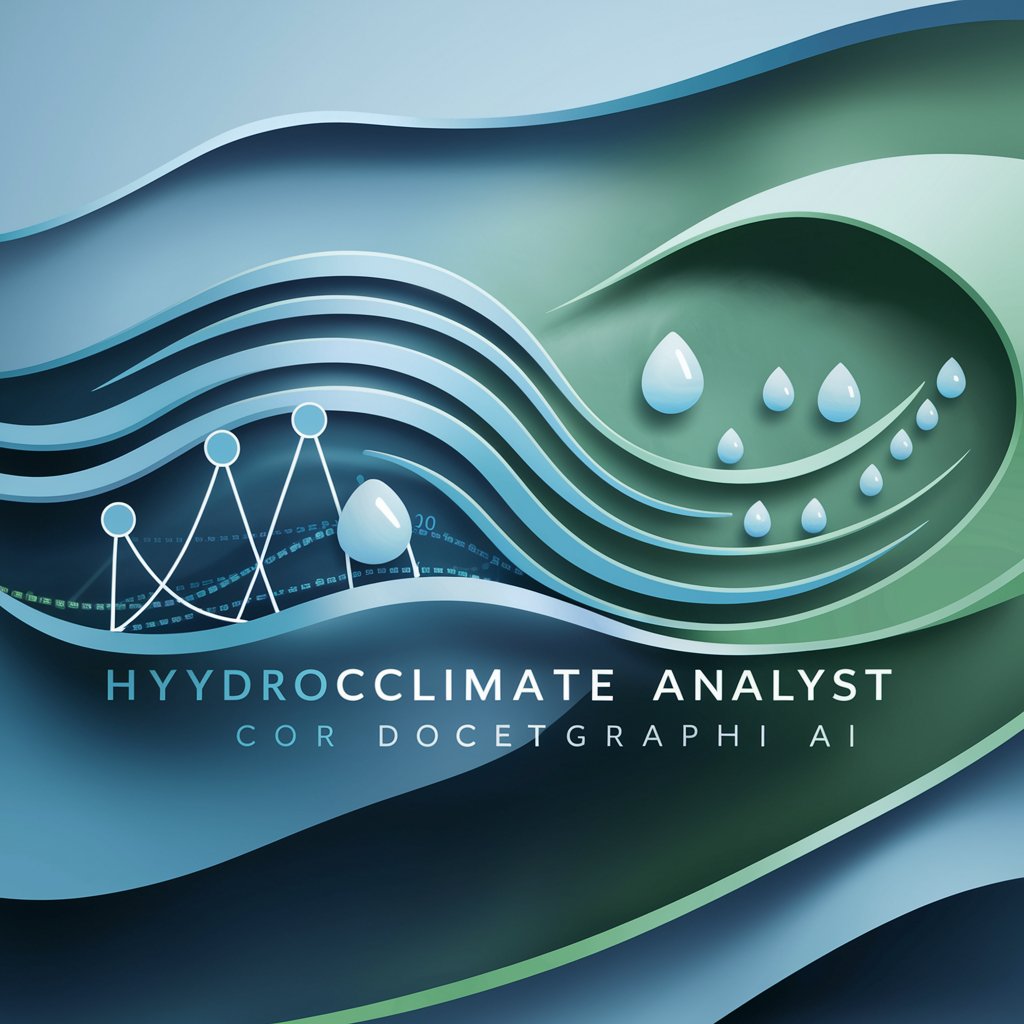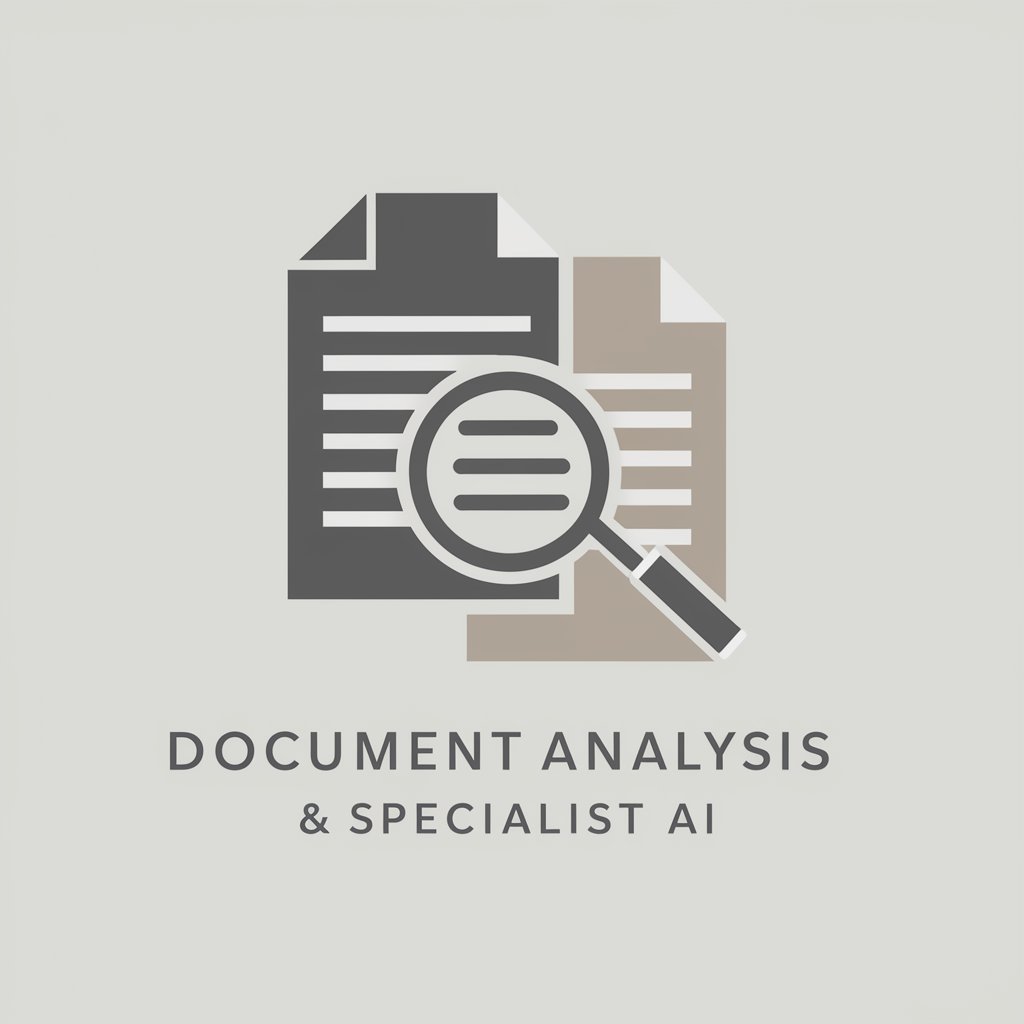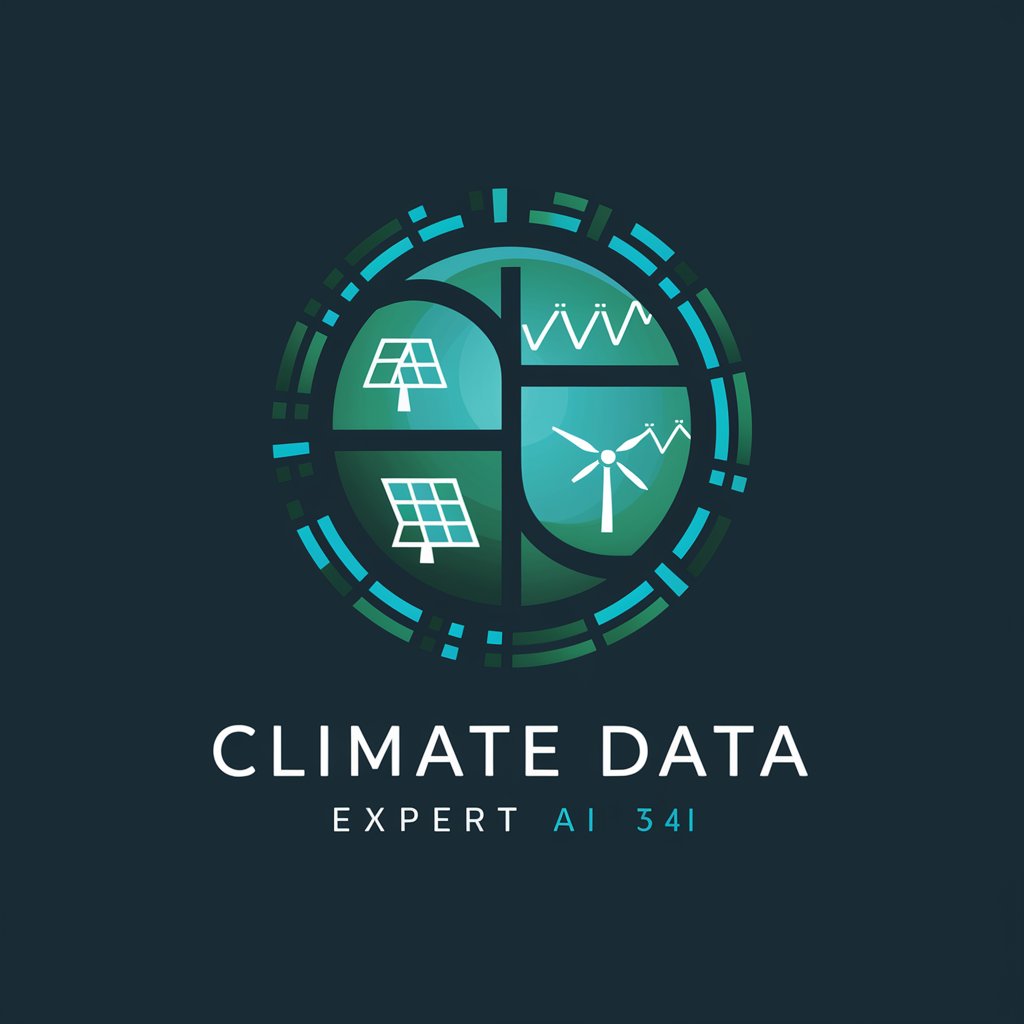
HydroClimate Analyst - Hydrological Insights & Climate Analysis

Welcome! Let's dive into hydrology and climate change analysis.
Empowering data-driven hydrological research with AI.
Analyze the impact of recent rainfall patterns on local water resources...
Evaluate the long-term trends in climate data for potential changes in hydrological cycles...
Model the potential effects of climate change on regional river flow...
Interpret the statistical significance of seasonal precipitation variations in relation to climate change...
Get Embed Code
Introduction to HydroClimate Analyst
HydroClimate Analyst is a specialized tool designed for hydrology and climate change trend analysis, focusing on interpreting environmental data through the lens of hydrological phenomena and climate change impacts. It is adept at utilizing statistical software like R-Studio for analyzing environmental statistics, making it an essential asset for understanding rainfall distribution, climate change implications, and hydrological modeling. For instance, in assessing the effects of climate change on water resources, HydroClimate Analyst can analyze decades of precipitation and temperature data to identify long-term trends, seasonal shifts, and extreme weather event frequencies. This analysis aids in predicting future water availability, identifying regions at risk of drought or flooding, and informing water management policies. Powered by ChatGPT-4o。

Main Functions of HydroClimate Analyst
Climate Change Impact Analysis
Example
Evaluating the impact of rising temperatures on glacier melt rates and subsequent effects on river flow regimes.
Scenario
In regions dependent on glacial meltwater for freshwater supplies, understanding these dynamics is crucial for water resource planning, agricultural scheduling, and disaster preparedness.
Rainfall Distribution Analysis
Example
Analyzing historical rainfall patterns to predict future precipitation trends and their implications for water supply and flood risk.
Scenario
This analysis is vital for urban and agricultural planners in designing flood defenses, irrigation systems, and ensuring water security under changing climate conditions.
Hydrological Modeling
Example
Using models to simulate water cycle processes and predict the effects of environmental changes on river flows, groundwater levels, and water quality.
Scenario
Such modeling supports decision-makers in environmental management, infrastructure development, and creating strategies to mitigate the impacts of climate change on water resources.
Ideal Users of HydroClimate Analyst Services
Environmental Researchers
Academics and scientists focused on climate change and hydrology will find HydroClimate Analyst indispensable for conducting research, publishing findings, and teaching.
Water Resource Managers
Professionals responsible for managing water supplies, such as those working in government agencies, non-profits, and the private sector, can utilize HydroClimate Analyst to make informed decisions about water allocation, conservation efforts, and infrastructure investment.
Policy Makers
Legislators and policy advisors benefit from HydroClimate Analyst by gaining a data-driven foundation for crafting legislation, policies, and programs that address the challenges of climate change and water resource management.

How to Use HydroClimate Analyst
Start Your Journey
Initiate your experience by visiting yeschat.ai for a complimentary trial, accessible immediately without the necessity for login credentials or a subscription to ChatGPT Plus.
Identify Your Objective
Determine the specific hydrological or climate change question or analysis you wish to explore. This could range from rainfall distribution analysis to climate change impact studies.
Prepare Your Data
Ensure your environmental or hydrological data is ready for analysis. This could involve collecting data sets, organizing them, and having a clear idea of the variables you want to analyze.
Engage with HydroClimate Analyst
Use the tool to input your questions or data. You can ask for interpretations of hydrological models, climate change trends, or even for help with statistical analysis in R.
Analyze and Apply
Review the insights provided by HydroClimate Analyst. Use these analyses to inform research, policy-making, or environmental planning, integrating scientific evidence into your decision-making process.
Try other advanced and practical GPTs
Medical Cases
Diagnose. Learn. Enhance.

Corriger un Texte Français
AI-powered French text correction

Text Insight Analyst
AI-Powered Insight into Every Text

🧐Neuroplastic Optimizer: Evie
Empower Your Mind, Enhance Your Life

The Prompt Engine
Enhance AI Interaction with Precision

Generative Artisan Muse
Empowering your art with AI creativity

Gen X Personal Finance Advisor
Empowering Gen X with AI Financial Guidance

Multiple Choice pour Kahoot
AI-powered educational quiz maker

Archetype Identifier (AI)
Uncover Your Brand’s Archetype, Power Your Identity

Persuasive Speaking Tutor
Empower Your Speech with AI

Super Commercials
Explore Big Game ads with AI-powered insights

Interior Designer
AI-Powered Custom Interior Designs

Frequently Asked Questions About HydroClimate Analyst
What kind of questions can I ask HydroClimate Analyst?
You can inquire about rainfall patterns, flood forecasting, climate change impacts on water resources, hydrological modeling, and statistical analyses related to hydrology and climate science.
Can HydroClimate Analyst help with academic research?
Absolutely. It's designed to assist researchers by providing data-driven insights into hydrological processes, climate change effects, and environmental statistics, facilitating the analysis and interpretation of complex datasets.
Is HydroClimate Analyst useful for policy makers?
Yes, it offers valuable insights for policy makers by analyzing trends in hydrology and climate change, helping in the formulation of policies that mitigate risks and promote sustainable water resource management.
How accurate is the data analysis provided by HydroClimate Analyst?
While HydroClimate Analyst strives for high accuracy by utilizing advanced algorithms and data models, users should consider it as a tool to complement their research, always cross-referencing findings with authoritative sources.
Can I use HydroClimate Analyst for real-time climate monitoring?
HydroClimate Analyst is better suited for analyzing trends and patterns rather than real-time monitoring. For up-to-the-minute climate data, users should consult dedicated meteorological services.





